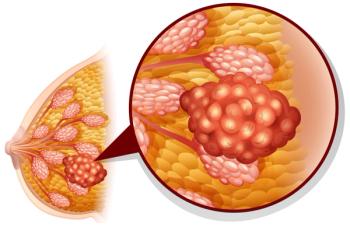
- Oncology Vol 29 No 4_Suppl_1
- Volume 29
- Issue 4_Suppl_1
(S019) Radiation-Induced Liver Disease Following Liver SBRT for Primary Hepatic Malignancies: Analysis of a Prospective Institutional Study
Primary hepatic malignancies that are not amenable to surgical resection portend a poor prognosis, despite available treatment options. Though RILD is rare following SBRT, this study demonstrates a risk, despite close adherence to standard dose and volume constraints. Further analysis of this prospective study will seek to elicit patient parameters that may increase susceptibility to toxicities, such as RILD.
Ashley Weiner, MD, PhD, Jeffrey Olsen, MD, Daniel Ma, MD, Pawel Dyk, MD, Todd Dewees, PhD, Parag Parikh, MD; Washington University; Mayo Clinic
PURPOSE AND OBJECTIVES: Although primary liver tumors are commonly treated by surgery, transplant, radiofrequency ablation, or transarterial therapies, there is an increasing patient population that is not suited to these treatments. Stereotactic body radiotherapy (SBRT) allows precise delivery of hypofractionated radiation-a strategy that is thought to minimize the risk of radiation-induced liver disease (RILD) over conventionally fractionated radiation. The objective of this study was to evaluate the feasibility, safety, and efficacy of SBRT in the treatment of inoperable hepatocellular cancer (HCC) and intrahepatic cholangiocarcinoma (IHC).
MATERIALS AND METHODS: A total of 28 patients with inoperable HCC or IHC and Child-Pugh score ≤ 8 were enrolled on a single-institution prospective protocol. A total of 32 lesions in 26 patients were treated with a planned dose of 55 Gy in five fractions, which was reduced to maintain the mean liver dose < 20 Gy or spare 700 cc of liver with doses < 20 Gy. Treatment was delivered via linear accelerator with immobilization, daily imaging, and end-expiratory gating on fiducial markers. Kaplan-Meier survival analysis was performed. Toxicities were graded by Common Terminology Criteria for Adverse Events version 4 (CTCAE v4) criteria, and radiographic response to treatment was scored by European Association for the Study of the Liver (EASL) guidelines.
RESULTS: The study cohort included 12 patients with HCC, 13 patients with IHC, and 1 patient with a biphenotypic tumor. Median prescribed dose was 55 Gy (range: 40–55 Gy) in five fractions. Mean tumor diameter was 5.3 cm (range: 1.6–12.3 cm), and mean PTV volume was 342 cc (range: 54–964 cc). Median follow-up was 7.7 months with a median overall survival (OS) of 9.8 months. The 6- and 12-month OS rates were 80% and 44%, respectively. On imaging 8 weeks posttreatment, complete radiographic response was noted in four patients, while six patients had a partial treatment response. Two grade 5 toxicities occurred during study follow-up. One patient with cirrhosis and a renal transplant history who was being treated with tacrolimus, a potentially hepatotoxic medication, developed RILD, which progressed to hepatic failure and death. Another patient with longstanding cirrhosis succumbed to a gastrointestinal bleed in the setting of RILD.
CONCLUSIONS: Primary hepatic malignancies that are not amenable to surgical resection portend a poor prognosis, despite available treatment options. Though RILD is rare following SBRT, this study demonstrates a risk, despite close adherence to standard dose and volume constraints. Further analysis of this prospective study will seek to elicit patient parameters that may increase susceptibility to toxicities, such as RILD.
Proceedings of the 97th Annual Meeting of the American Radium Society -
Articles in this issue
Newsletter
Stay up to date on recent advances in the multidisciplinary approach to cancer.





















































































